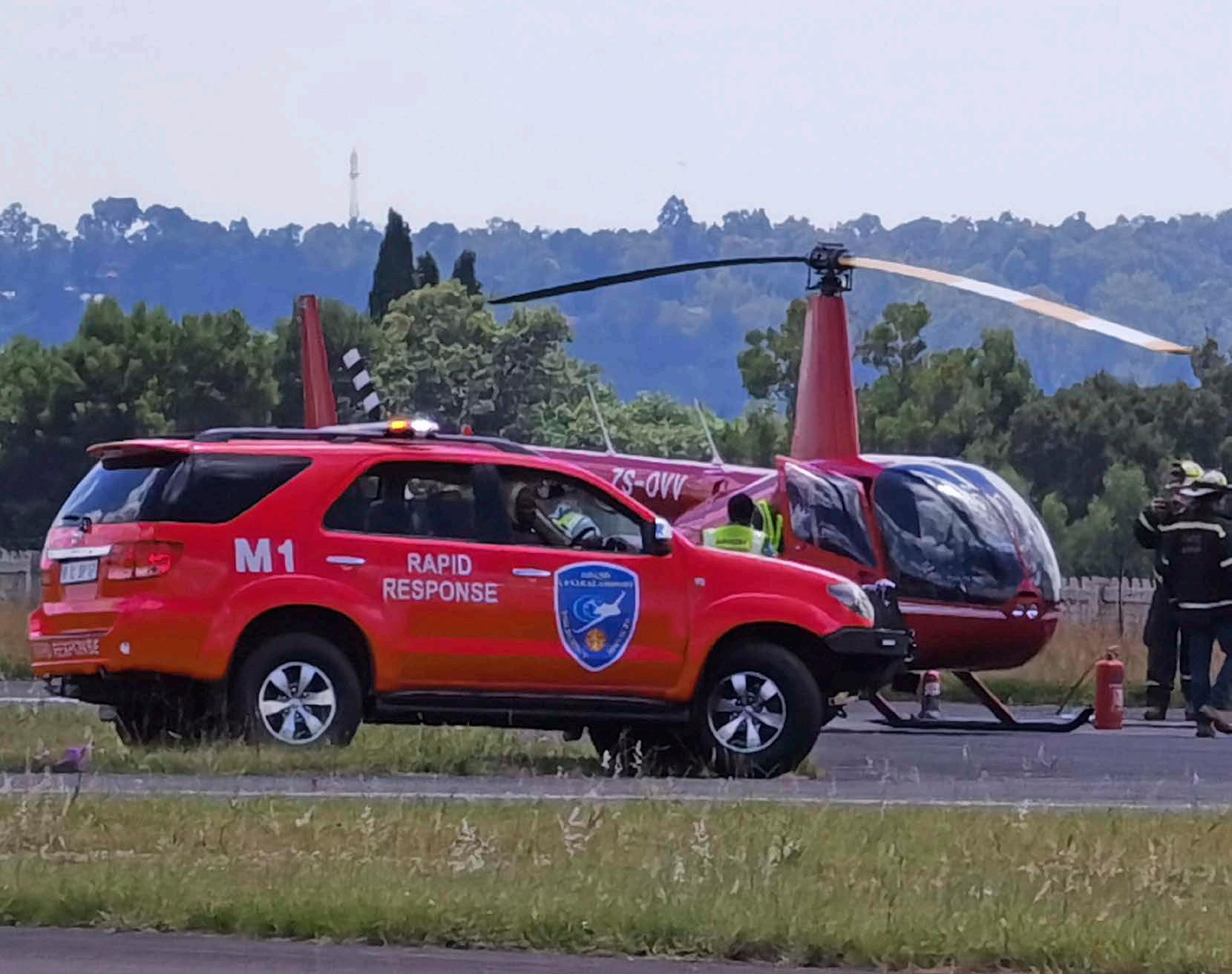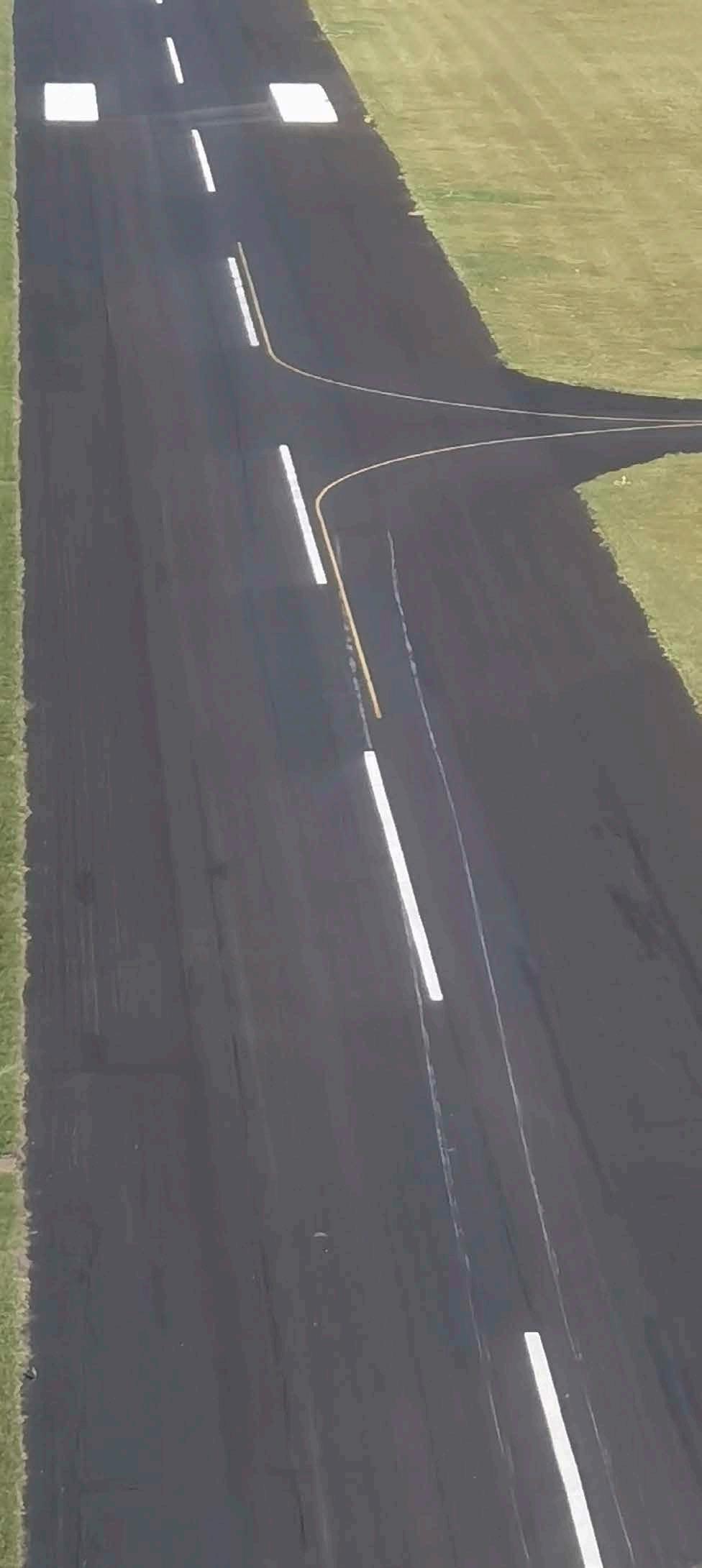
5 minute read
George Tonking - HELI OPS
While sitting quietly in my office doing admin recently, I got a panicked call from one of my pilots, Carl Nicholl. Something about an engine failure in-flight… Trying to limp back to Grand Central… I grabbed my flight gear, seconded a crew member and tore downstairs to a Robbie resting out on the pad.
AT FIRST GLANCE, worldwide statistics intensively for our particular high-pressure would have you believe that helicopter flying is operational environment. One of those pilots inherently safe, compared to walking across the was Carl, who started out, as so many do, street, which is technically the most dangerous with an innate love for flying machines. From thing you could do! In South Africa, however, flying radio-control models, to drones, he our accident stats seem finally became a commercial to indicate that both general aviation, and light helicopter flying in particular, is becoming more dangerous. you basically fall out of helicopter pilot, with lots of input from both me and a few of my fellow pilots in the industry. In the interest of aviation When training to be a pilot you prepare for every the sky safety, I asked him to share his in-flight emergency emergency situation account. imaginable, but never expect to put that training “It all started out as a normal Monday morning, into actual practice. with an ops flight planned from the Ultimate In the security flying industry, we also realised Heliport, over Pretoria and back home in a that we would need to train pilots more Robinson R44 Raven II. But after only thirty
Advertisement
minutes of flying, my Monday morning began to unravel with a hard kick to the left and a deafening sound you don’t normally hear in the engine.
Another two kicks to the left, followed by the Low Rotor RPM (LRRPM) horn got my brain racing. In helicopters, rotor RPM is life. Put simply, if the main rotor slows down too much you basically fall out of the sky. It’s your job as a pilot to act fast to maintain your RPM by lowering the collective to reduce drag on the blades. This I did, and found that the engine was still providing power, but at a significantly reduced level.
At that point the helicopter was in a descent due to the reduced power. “What else can I do to stay airborne?” I asked myself. The answer was to find the R44’s cruising sweet spot – in this case, around 60kts, which allowed me to barely maintain altitude with the RPM still just in the green.
I quickly made for the closest fire-service equipped airport – Grand Central. “Tower, Mayday! Mayday! Mayday,” I radioed the ATC. It felt almost surreal uttering those words for real, but there I was nursing the crippled aircraft towards the airfield, while keeping my eye open for alternative spots to land in case the donkey decided to croak completely. The N1 Highway was starting to look very attractive for a possible auto-rotate descent.
“Do you need fire service,” Grand Central’s ATC radioed back.
Safe on the ground.

After touchdown at 40 knots the skid was long.
“Yes,” I replied, in no uncertain terms.

I already knew I would need a long, hard runway to do a run-on landing at speed, to keep airflow over the blades. Helicopters require a lot more power to hover than for forward flight, so hovering was out of the question. Autorotation remained a possibility, but I chose to use the engine while I still had it.
The key in any emergency situation is to keep a clear mind, while weighing up your options. Different pilots may decide to respond in totally different ways. I’d made my choice and was desperate to execute it as well as possible.
Grand Central cleared me in on Runway 17, as I lined up I was surprised to hear George, a.k.a. "The Silver Fox", on the radio, ready to help guide me in from the vantage of our other R44, circling nearby.
“Not to alarm you,” he said. “There are huge clouds of smoke billowing out behind you. But, we are here with you. Scream if you need me.”
I said nothing, knowing if I screamed once, that I probably wouldn’t stop until strapped into a strait-jacket safely on my way to the loony bin.
On approach, my RPM was stable, the engine was just hanging in, and levelled off five feet from the runway surface, I knew that it was now or never. I slowed the aircraft down further, raising the collective to soften the landing. At that, the LRRPM horn screamed shrilly.
“Put her down now,” said "The Silver Fox" in It turns out the villain of the day was a failed my helmet, as my speed nudged below 40kts. valve, which dropped into the cylinder, before Another thing I remembered being taught in having a party with the piston. Those debris training was not to use your cyclic rotor disk then got carried over and had a party with a attitude to slow down, as this can bring the second piston, leaving the horizontal 6-cylinder main blades dangerously close to the tail boom engine with only four functioning cylinders. It’s – running the risk of testimony to Lycoming severing the tail from the craft. So, how to stop the chopper? More training came Scream if you need me that the engine did not fail completely. No-one’s fault, just undetectable wear and tear. flooding back. You reduce the lift by lowering Having survived my in-air incident, I can’t the collective, making the aircraft “heavy” and encourage pilots enough: Practice, practice and forcing the friction between skids and tarmac to practice your emergency procedures until they slow you. After skidding for 157 metres, I finally become second nature. You may not expect to came to a sweating halt. What a feeling, (once become a statistic. But do all you can to not be!” I’d remembered how to breathe again), to hear everyone whooping and applauding over the radio.
Carl, twenty minutes later, back on " a different " horse.





